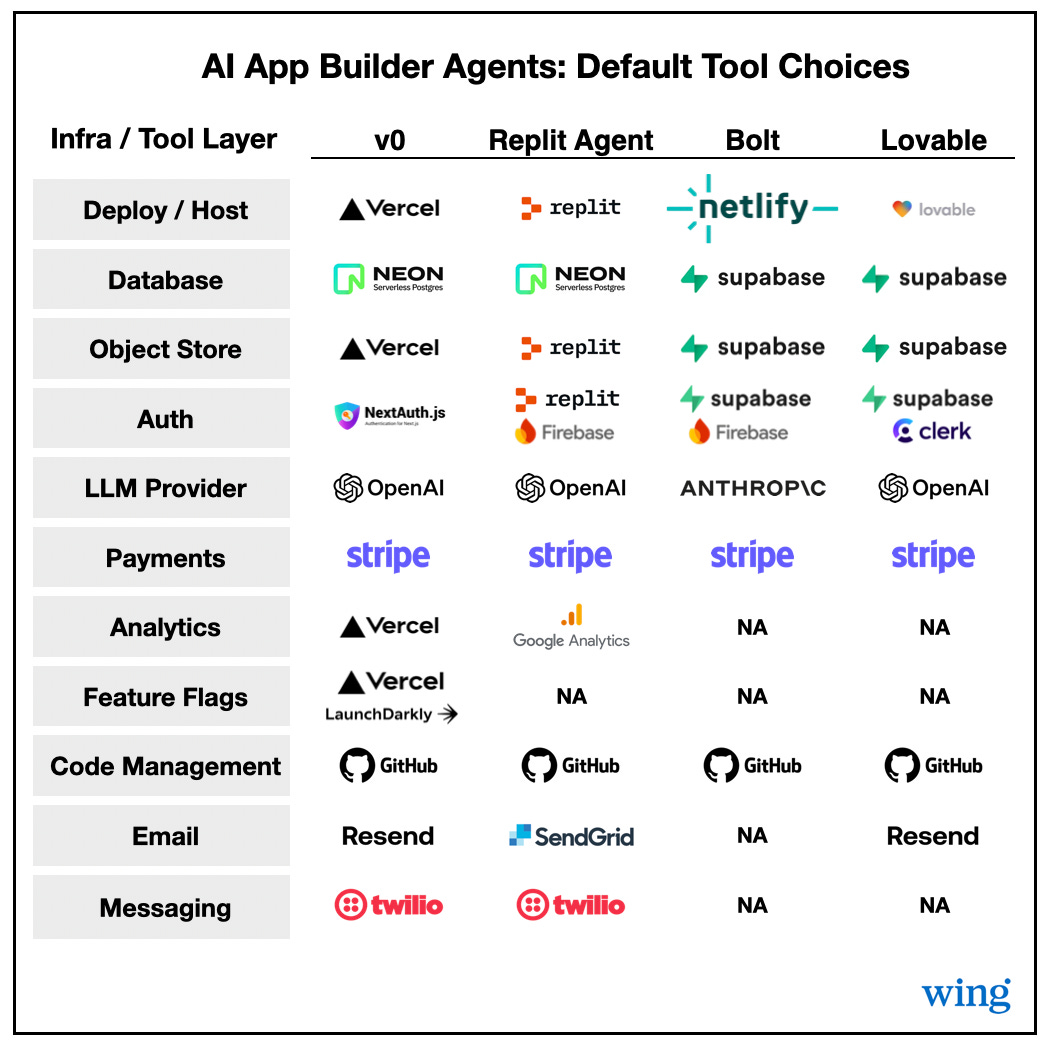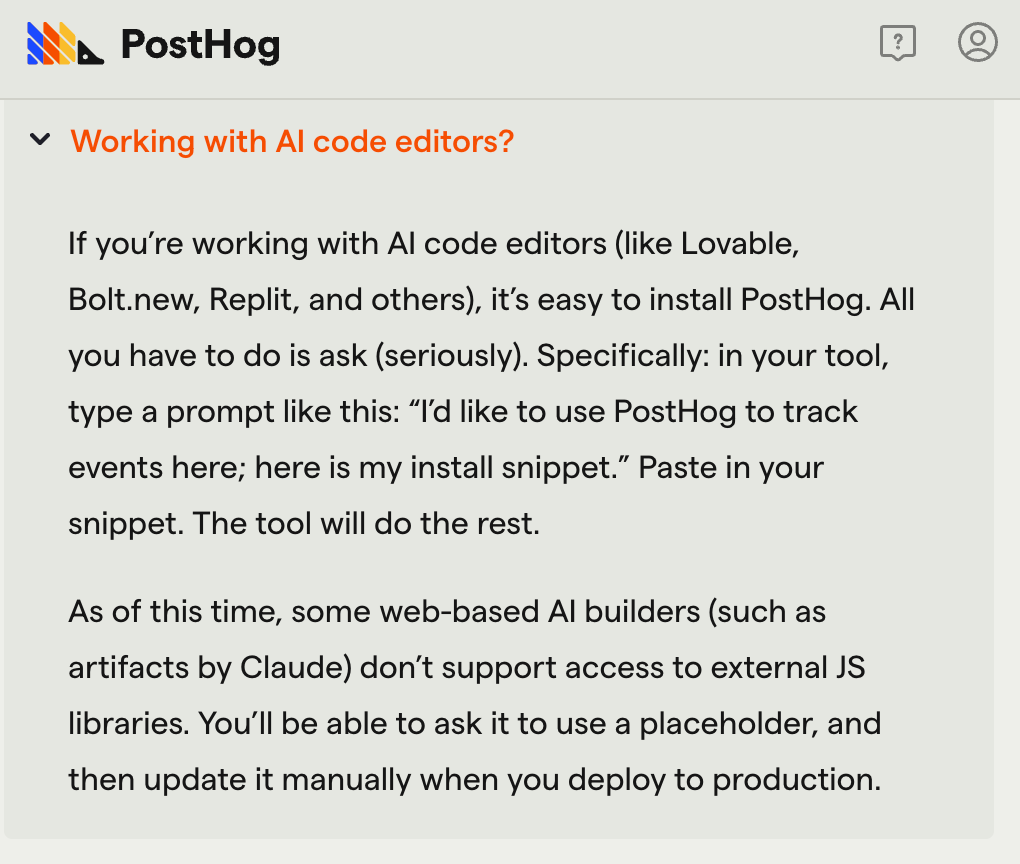This is a weekly newsletter about the business of the technology industry. To receive Tanay’s Newsletter in your inbox, subscribe here for free:
Hi friends,
As part of Databricks’ acquisition of Neon, they included a jaw-dropping chart: 80% of new databases spun up last month on Neon were created by AI agents, not people.
The same pattern is spreading as more and more non-developers use “vibe-coding” platforms such as v0, Replit, Bolt, Lovable all of which are on a tear. Non-developers put a prompt and an AI agent expands the project requirements and generates the code and the integrations baked into that template become the long-term defaults for core systems such as auth, payments, databases, etc.
Even with tools like Cursor, which targets engineers, as more of the code is written by coding agents, some developer tool and infrastructure decisions are being pushed to the agent as part of an implementation detail (based on the model being used under the hood). Once the agent picks a tool, humans may not bother revisiting the decision unless something breaks.
The Stack of Choice for AI Agentic Tools
The graphic below shows which sets of tools1 and products are being used as defaults by the various AI app builders and vibecoding platforms. As you can see, users end up using many of the same set of tools by default: Neon or Supabase for databases, Vercel or Netlify for hosting, Stripe for payments, Resend or SendGrid for email. The picture explains why some vendors are suddenly everywhere: the app builders with end adoption are creating more and more pieces of software, and they are choosing these tools (thanks to integrations and templates) as the defaults.
As you can see, some also preference their native tools for various components of the stack, most visible in the case of v0 by Vercel and Replit agent by Replit.
Four Concrete Steps for Dev‑Tool Builders
1. Optimize for LLM Visibility
Large language models ultimately drive these tools and agents and monitoring and being visible to them is critical. They suggest code snippets based on what they have seen in docs, GitHub repos, public Q&A, and official API specs. If your product is invisible to the model, the agent never considers you.
What to do
Publish a clean OpenAPI or GraphQL schema. Models parse structure better than prose.
Seed high-quality, copy-pasteable examples across GitHub, Stack Overflow, and your own docs.
Track how you show up in LLMs using an LLM visibility monitoring tool
Example: Upstash’s Redis client appears in thousands of Next.js repos. That density makes “add caching” tend to auto-complete to Upstash inside v0, despite no official integrations.
2. Ship Zero-Click Provisioning and Guardrails
Agents will not navigate dashboards or paste keys manually. They need a single HTTP request that creates a resource, returns credentials, and shuts down cleanly when idle.
What to do
Let a single API request spin up a new project and return its URL, username, and password in under a second.
Issue narrowly scoped service tokens so the agent never has to handle the master credential.
Make it just as easy to clean up: one call should delete the project when the demo ends.
Default to scale-to-zero so unused sandboxes cost nothing.
Example: Neon delivers in this regard: a new Postgres branch is ready in ~800 ms, costs pennies while idle, and can be forked for every test run, which allowed it to become the default database for Replit and v0.
3. Become the first-click integration inside agentic builders
Defaults and integrations with the prominent AI app builders is critical to winning and capturing these new applications and workloads. One first-party template can outperform 100s of blog posts.
What to do
Build official starters for each editor that import your SDK, inject env vars, run a health check, and commit a sample file.
Include documentation for non-developers on how they can integrate your product with their app builder
Keep the template owned by your team so you can push fixes on release day.
Examples: Stripe wrote native components for v0. When a user asks “add payments”, the agent pastes a ready-to-run checkout form instead of a link to Stripe docs. Payments on other processors require manual wiring, so users rarely switch.
Similarly, Posthog has instructions for non-developers on how to integrate Posthog with these AI agents, despite not having official integrations yet or being the official default yet.
Closing Thoughts
The procurement funnel is shrinking to a single function call. When an AI agent can spin up a database, cache, or payment gateway in under a second, it locks in that choice long before a human engineer even opens the repo. That shift raises the bar for every dev-tool company: your marketing site is now your OpenAPI spec, your growth loop is public code examples, and a critical distribution channel is whether the agents and app builders use you as a default or recommended integration.
Make your product trivial for a model to reference, instant for an agent to provision, and obvious for a no‑code user to trust. Do that and your logo will show up in templates, spread with every prompt to app “generate” click, and become the default the next generation of builders learns first. Build for the AI agent first and the developer will follow.
I excluded Cursor and similar IDEs because they tend to be used be developers and the default can vary based on the underlying model used, but even they can be opinionated on certain layers and may play a bigger role in automatically choosing the develop tool at a given layer over time.






